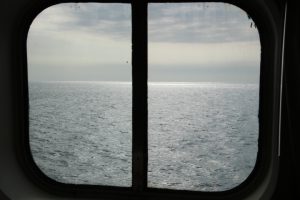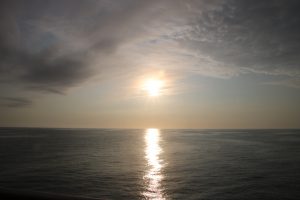It was cloudy at sunrise and the sun was obscured by the thick cloud banks formed by the Humboldt. We are at 4° S at 07:15 but it will take the best part of the day to reach the Equator. At present we are off Ecuador.
The Humboldt dominates here but in some years there is a change to the weather known as the warm phase of the El Niño-Southern Oscillation which brings weather changes to the Pacific as large belts of warm water develop west of our position. Its effects are first experienced here as the colder water is pushed deeper and more westward as the nutrient-poor warm water moves along the coast.
El Niño is associated by high pressure systems in the western Pacific and low pressure in the eastern Pacific. Remember, “winds do blow from high to low,” so over cycles of between 2 and 7 years there are temporary changes in temperature and rainfall patterns (this is still weather and not climate. El Niño is a change in the former and not a climate extreme.)
Countries bordering the Pacific are mostly affected but as the atmosphere is a connected system, what happens in the Pacific impacts upon other places. So weather changes can take place in Europe. None of this is new. Scientists have found fossils and fossilised chemical signatures of warmer and colder weather around 13,000 years ago.
In 1525 Pizarro noted, when he landed in Peru, that rain was falling in the bone dry deserts he had been informed of before his voyage. In the UK 1982-3, 1997-8 and 2014-16 have been amongst the strongest El Niño periods on record.
This afternoon the Captain introduced a walk and fresh air programme where deck by deck all passengers, unless ill, were allowed a supervised 30 minute walk on Deck 3. Social distancing was imperative along with no touching of handrails as one walked the deck.
As of now we are 58 guests and 88 crew with flu like symptoms but we will know more tomorrow when we rendezvous with the Rotterdam.





